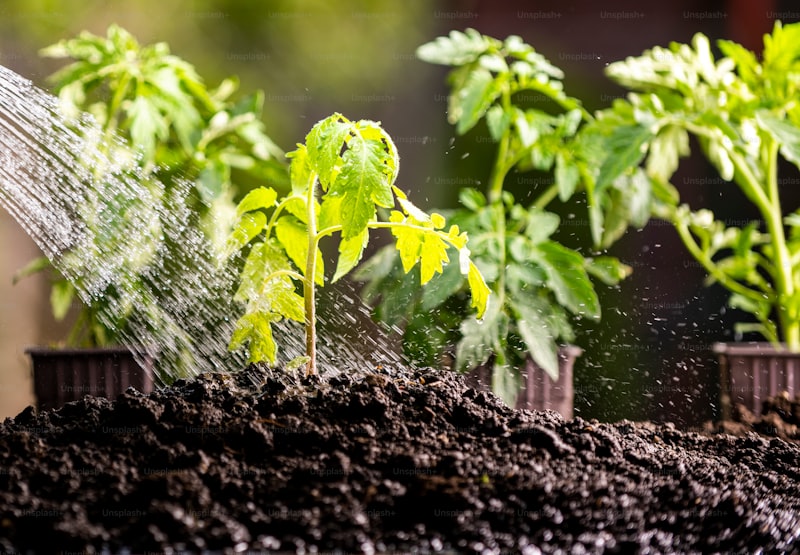One of the key roles of soil is its function as a nutrient reservoir. As plants grow, their roots delve into the soil to absorb essential minerals like nitrogen, phosphorus, and potassium. These nutrients are vital for plant growth and are passed on through the food web, sustaining animals and ultimately humans. Without fertile soil, agricultural productivity would plummet, impacting global food security.
Beyond nutrients, soil also regulates water availability. Its ability to absorb and store water affects local hydrology, influencing everything from groundwater recharge to flood mitigation. Healthy soils with high organic matter can retain more water, reducing runoff and erosion during heavy rains. This water regulation function is crucial for maintaining stable ecosystems and supporting diverse plant and animal communities.
Moreover, soil serves as a habitat for a myriad of organisms, from microscopic bacteria to earthworms and insects. These soil organisms play essential roles in nutrient cycling, decomposition, and even pest control. They break down organic matter, releasing nutrients that plants can use, and their activities contribute to soil structure, enhancing its ability to store water and support plant roots.
The importance of soil extends beyond terrestrial ecosystems; it also affects climate regulation. Soils store vast amounts of carbon, playing a critical role in the global carbon cycle. Healthy soils can sequester carbon dioxide from the atmosphere, helping mitigate climate change by reducing greenhouse gas levels.
Beneath Our Feet: Unveiling the Crucial Role of Soil in Global Ecosystems
Have you ever paused to think about the ground beneath your feet? Soil, often overlooked and underrated, plays a pivotal role in supporting life on Earth. From providing nutrients to plants to filtering water and regulating climate, soil is the unsung hero of our ecosystems.
At its core, soil is a complex mixture of minerals, organic matter, water, air, and countless microorganisms. This dynamic composition not only supports plant growth but also influences the health of entire ecosystems. Imagine soil as a bustling city underground, where organisms like bacteria, fungi, and earthworms work tirelessly to decompose organic matter and recycle nutrients. This process, known as nutrient cycling, ensures that essential elements like nitrogen, phosphorus, and potassium are available for plant uptake, fostering lush forests, vibrant grasslands, and bountiful crops.
But soil does more than just nourish plants. Its structure plays a crucial role in regulating water flow and storage. Healthy soils act like sponges, absorbing rainwater and reducing the risk of floods and erosion. In regions prone to drought, certain soils can store water for extended periods, providing a lifeline for plants and animals alike.
Climate regulation is another critical function of soil. As vegetation grows, it absorbs carbon dioxide from the atmosphere through photosynthesis. A significant portion of this carbon is then stored in the soil as organic matter. This process, known as carbon sequestration, helps mitigate climate change by reducing greenhouse gas levels in the atmosphere.
Moreover, soil serves as a habitat for a vast array of organisms, from microscopic bacteria to burrowing mammals. This biodiversity not only supports soil health but also contributes to overall ecosystem resilience. Healthy soils teeming with diverse life forms are better equipped to resist pests and diseases, thereby reducing the need for chemical interventions in agriculture.
In essence, soil is the foundation upon which terrestrial life thrives. Its intricate web of interactions sustains biodiversity, regulates climate, and supports food production. As stewards of the Earth, understanding and conserving soil health is crucial for ensuring the well-being of current and future generations.
Earth’s Silent Hero: How Soil Sustains Life Across Diverse Ecosystems
Have you ever stopped to think about the ground beneath your feet? Soil, often overlooked, is Earth’s silent hero, quietly supporting life across a myriad of ecosystems. From towering forests to expansive grasslands, and even the depths of oceans, soil plays a vital role in sustaining the diversity of life on our planet.
In its essence, soil is not just dirt; it’s a complex, living system teeming with activity. Imagine it as a bustling city underground, where billions of microorganisms, insects, worms, and plant roots interact in a delicate dance of nutrient exchange and decomposition. These interactions form the foundation of terrestrial ecosystems, regulating everything from water filtration to nutrient cycling.
One of soil’s remarkable abilities lies in its capacity to store water. Like a sponge, soil absorbs rainfall, preventing runoff and erosion while slowly releasing water to plants and aquifers. This process is crucial in maintaining balanced hydrological cycles, which are essential for agriculture, drinking water supply, and flood control.
Furthermore, soil acts as a vast storehouse of nutrients essential for plant growth. Through a dynamic process involving weathering of minerals and decomposition of organic matter, soil provides plants with nitrogen, phosphorus, potassium, and other micronutrients. These nutrients are then passed along the food chain, sustaining animals and humans alike.
Beyond its role in supporting terrestrial life, soil influences global climate patterns. It serves as a carbon sink, storing more carbon than all the Earth’s forests combined. Healthy soil rich in organic matter helps mitigate climate change by sequestering carbon dioxide from the atmosphere, thus playing a critical role in maintaining planetary balance.
From Forests to Farmlands: Soil’s Vital Impact on Biodiversity Revealed
Imagine soil as a bustling metropolis teeming with life. Beneath its surface lies a complex web of organisms—from microscopic bacteria to earthworms—that orchestrate a symphony of nutrient cycling and decomposition. These tiny inhabitants transform organic matter into vital nutrients, enriching the soil and sustaining plant life. In turn, plants provide habitats and food for countless species, creating ecosystems that thrive on this delicate balance.
In forests, soil acts as a silent guardian, nurturing towering trees that shelter diverse flora and fauna. The nutrient-rich humus layer supports a myriad of plants, from delicate ferns to majestic hardwoods, each contributing to the forest’s intricate biodiversity. Animals, too, depend on the forest soil for food and shelter, forming intricate food chains that weave through the dense undergrowth.
Transitioning to farmlands, soil becomes the backbone of agriculture, supporting crops that feed the world’s population. Farmers rely on fertile soil to yield bountiful harvests year after year. However, intensive farming practices can deplete soil health, leading to erosion and loss of biodiversity. Sustainable farming methods aim to preserve soil quality by minimizing chemical inputs and promoting organic matter, fostering a harmonious relationship between agriculture and biodiversity.
The importance of soil biodiversity extends beyond terrestrial ecosystems. Coastal mangroves and wetlands, often overlooked, rely on nutrient-rich soils to support unique species adapted to these dynamic environments. Mangrove forests, for instance, protect coastal communities from storms and provide nurseries for marine life, showcasing soil’s role in maintaining biodiversity across landscapes.
Nutrient Nexus: Soil’s Key Role in Supporting Plant and Animal Communities
At its core, soil serves as a nutrient nexus, a vital hub where countless biological processes unfold. It’s not just dirt; it’s a bustling community in itself, teeming with microscopic organisms like bacteria, fungi, and protozoa. These tiny but mighty beings break down organic matter, releasing essential nutrients like nitrogen, phosphorus, and potassium that plants need to grow. Imagine them as nature’s own recycling team, transforming fallen leaves and dead organisms into life-giving sustenance for new generations of flora and fauna.
But soil isn’t merely a passive medium. It actively interacts with the environment, influencing everything from water filtration to climate regulation. Healthy soil acts like a sponge, absorbing rainwater and preventing erosion while filtering out pollutants. It also stores carbon dioxide, a crucial player in mitigating climate change, by locking it away in organic matter.
The diversity of soils across the globe—from sandy deserts to fertile plains—reflects their unique roles in supporting different ecosystems. Each soil type has its own texture, composition, and fertility levels, which determine what can thrive in it. Just as different climates support diverse species of plants and animals, so too do different soils.
In agriculture, understanding soil health is paramount. Farmers work tirelessly to maintain soil fertility through practices like crop rotation and organic amendments, ensuring sustainable yields year after year. Healthy soil not only boosts crop productivity but also enhances the nutritional quality of the food we eat, enriching it with essential vitamins and minerals.
Underground Treasure: Exploring the Hidden Wealth of Soil in Ecosystem Health
Have you ever considered the incredible wealth hidden beneath our feet? Soil, often overlooked, plays a crucial role in the health of ecosystems worldwide. Beyond its humble appearance lies a treasure trove of nutrients and organisms essential for life.

Imagine soil as a bustling city teeming with activity. Beneath the surface, countless microorganisms like bacteria, fungi, and nematodes work tirelessly. They break down organic matter, recycling nutrients that plants need to grow. This intricate web of life forms the foundation of healthy ecosystems, supporting everything from towering trees to tiny wildflowers.
Soil isn’t just dirt; it’s a dynamic ecosystem in itself. Its ability to retain water and nutrients is vital for plant health and resilience against droughts or floods. Healthy soil acts like a sponge, absorbing rainfall and preventing erosion, thus safeguarding our environment.
Think of soil as nature’s pharmacy. It provides essential nutrients like nitrogen, phosphorus, and potassium that plants need to thrive. These nutrients are released slowly, ensuring a steady supply for plants throughout their growth cycle.

The diversity within soil ecosystems is staggering. Each handful of soil contains millions of organisms, each with its role in maintaining balance. Just like a community relies on its members, healthy soil thrives on diversity, benefiting from the contributions of every microorganism and plant root.
In essence, soil is more than just dirt under our feet; it’s a vital component of ecosystem health. By nurturing healthy soil, we support biodiversity, promote sustainable agriculture, and mitigate climate change. Understanding and appreciating the hidden wealth of soil is key to safeguarding our planet’s future.
Climate Guardians: Soil’s Contribution to Carbon Sequestration and Climate Regulation
Did you know that beneath our feet lies a powerful ally in the fight against climate change? Soil, often overlooked, plays a crucial role as a climate guardian through carbon sequestration and climate regulation.
Soil acts as a natural carbon sink, absorbing carbon dioxide from the atmosphere and storing it in organic matter and minerals. This process, known as carbon sequestration, helps mitigate the greenhouse effect by reducing the amount of CO2 in the air. Healthy soils with high organic content, like those found in forests and grasslands, are particularly effective at sequestering carbon.
But soil does more than just store carbon. It also regulates the Earth’s climate in various ways. For instance, soils help regulate the water cycle by absorbing and storing water, which affects local and global weather patterns. This water storage capacity reduces the risk of floods and droughts, providing resilience against extreme weather events intensified by climate change.

Moreover, soil is a habitat for billions of microorganisms that contribute to its health and fertility. These soil organisms play a critical role in nutrient cycling, breaking down organic matter, and releasing nutrients that support plant growth. Healthy soils rich in biodiversity are more resilient to disturbances and better able to sustain agricultural productivity in a changing climate.
Imagine soil as Earth’s skin, protecting and nourishing life above and below ground. Just as healthy skin defends our bodies from external threats, healthy soils defend our planet from the impacts of climate change. They are a vital part of the Earth’s natural infrastructure, providing essential services that benefit ecosystems, agriculture, and human well-being.
Soil’s role as a climate guardian cannot be overstated. By sequestering carbon, regulating water cycles, and supporting biodiversity, soils help maintain a stable climate and sustain life on Earth. Understanding and protecting this precious resource is crucial for our future and the health of our planet.
Frequently Asked Questions
Why is soil erosion a concern for ecosystems
Soil erosion is a critical concern for ecosystems due to its detrimental effects on soil fertility, water quality, and biodiversity. It can lead to loss of arable land, increased sedimentation in water bodies, and habitat degradation for plants and animals.
How does soil quality affect ecosystem health
Understanding how soil quality affects ecosystem health is crucial for maintaining biodiversity and sustainability. Healthy soil supports diverse plant and animal life, regulates water flow and filtration, and stores carbon. Poor soil quality can lead to erosion, reduced crop yields, and increased vulnerability to droughts and floods.
Why is soil important in ecosystems
Discover why soil plays a crucial role in ecosystems with our concise FAQ. Learn how soil supports plant growth, nutrient cycling, and water filtration. Understand its impact on biodiversity and the environment.
What role does soil play in nutrient cycling
Soil plays a crucial role in nutrient cycling by acting as a reservoir and transporter of essential nutrients needed for plant growth. Through processes like decomposition, mineralization, and nutrient uptake by plants, soil helps recycle nutrients back into the ecosystem. Understanding soil’s role in nutrient cycling is vital for sustainable agriculture and ecosystem health.
How does soil support biodiversity
Discover how soil sustains biodiversity by providing habitats and essential nutrients for diverse organisms. Soil composition and structure play crucial roles in supporting a wide array of plants, animals, and microorganisms, contributing to the overall ecosystem health and resilience.


